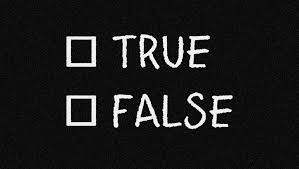Are writers obligated to portray their niches accurately?

As a fiction writer who likes to write about crime, I’ve included a couple of violent female criminals in my work and, truthfully, that bothers me. Even though I’m writing fiction, I should offer an accurate representation of violent criminals, and violent criminals are almost always men. Because, men? We suck:
· 75% of all violent criminals are men
· 90% of all murderers are men
· Mass murderers are usually men
· Men are the perpetrators in 75% of domestic violence cases
It’s not that there aren’t violent female criminals; they’re just the exception to the rule. Writing, whether it’s fiction or nonfiction, is a mirror of its time. Shouldn’t that massive gender discrepancy be portrayed in my work (and in crime writing in general)?
This issue of accuracy extends beyond crime fiction. American writers tend to be known for their regionalism, but I wonder if that regionalism is limiting. For example, I’ve mentioned before that Anne Tyler is one of my favorite writers, and her work is often linked to Baltimore. But Tyler’s work doesn’t capture that city’s 64% African-American population. Even if you place her work in the 1980s, the non-white residents of Baltimore City comprised close to 60% of the population. That said, Tyler’s Baltimore-based books are occasionally set in the neighborhood of Roland Park, which is overwhelmingly white. Some would argue (as I would) that Tyler’s intention is to capture human emotion in her work, rather than an accurate portrayal of the demographics in the city surrounding her characters.
But is it then fair to call her a “Baltimore writer”?
David Simon’s “The Wire” showcased the city’s slums and crimes, but some critics argued his show wasn’t a fair representation of the city, either. And the films of John Waters capture a side of Baltimore that Tyler and Simon rarely approached. If these artists don’t encompass the entire city in their work, is it correct to call their work a true representation of that city? Are John Waters, David Simon, and Anne Tyler “Baltimore artists”?
I’d argue that they are and that, in the process of creation, most writers probably aren’t thinking of population demographics. As Lorrie Moore wrote, “Writers are merely open, helpless texts with no real understanding of what they have written.” Literature is ultimately studied through a political lens, but politics twists your characters when you create them. You want to invent people, not representatives of people, and political analysis tends to categorize, not individualize.
When the Great American Novel is eventually picked, that novel probably isn’t going to accurately portray America — our complex mix of races and societies, the breadth of our accomplishments, the numbing weight of our crimes. And maybe that imaginary novel reaches too widely to ever be real.
Maybe what we’ll have to settle for is the kind of great art that captures one moment so succinctly, its beauty is apparent to almost all who observe it: the lonely loveliness of Hopper’s women, the closing lines of The Great Gatsby.
It’s like a photograph that shows a child and, blurred around her, are the members of her family — some quarreling, some laughing, some silent. You can barely see them, but that doesn’t matter. The artist hands you the picture, and the child is real and beautiful.
And that’s enough.
E.A. Aymar earned a B.A. in creative
writing and an M.A. in literature. He lives with his wife and son just outside
of Washington, DC. His debut novel is I’ll Sleep When You’re Dead.

